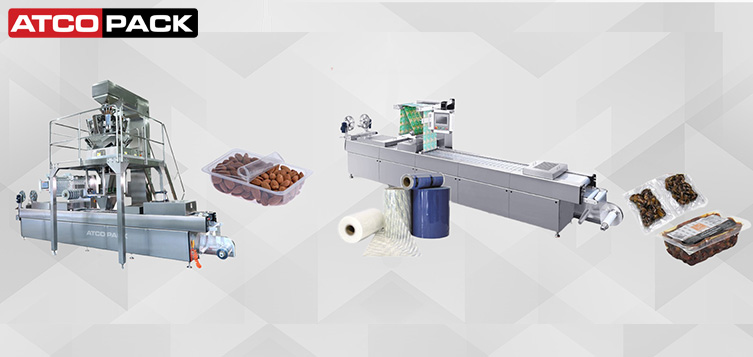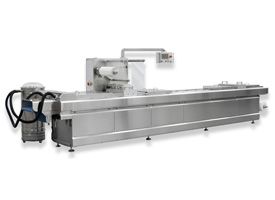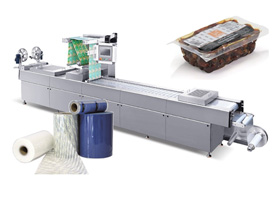Cost-effective Solutions: Thermoforming vs. Other Food Packaging Methods

The food industry thrives on innovation, not just in the recipes and flavors it offers, but also in the ways it presents and preserves its products. Packaging is a crucial element, influencing everything from shelf life and product safety to branding and environmental impact. Among the myriad packaging options available, thermoforming stands out as a frontrunner in cost-effectiveness. Here's a comprehensive look at thermoforming compared to other food packaging methods in terms of cost.
What is Thermoforming?
Thermoforming is a process where plastic sheets are heated until they become pliable and then molded into desired shapes using a mold and vacuum. Once cooled, the plastic retains the shape of the mold. This method is widely used for producing trays, cups, clamshells, and a variety of other food packaging formats.
Cost Implications of Thermoforming
1. Material Usage:
Thermoforming allows for efficient use of materials. The thickness of the plastic can be controlled, ensuring minimal waste. Compared to alternatives like injection molding, where excess material often gets wasted, thermoforming's material efficiency translates to cost savings.
2. Tooling Costs:
The molds used in thermoforming are relatively less expensive than those used in other plastic molding processes. This makes small batch production more economically viable, catering to niche markets or seasonal products.
3. Speed of Production:
Thermoforming machines can produce large quantities in a short amount of time, especially when working with standardized designs. This speed results in lower production costs per unit.
Comparison with Other Food Packaging Methods
1. Injection Molding:
While injection molding offers precision and can be used with a broader range of materials, its initial tooling costs are high. This makes thermoforming more cost-effective for shorter runs.
2. Blow Molding:
Commonly used for bottles and containers, blow molding uses air to expand molten plastic into a mold. While it's efficient for certain applications, the energy costs and material wastage can be higher than thermoforming, especially for more intricate designs.
3. Flexible Packaging:
Using materials like films and foils, flexible packaging is lightweight and offers good barrier properties. However, the costs can escalate with multi-layered solutions, and it may not provide the same rigidity or protection as thermoformed packaging.
4. Glass and Metal Packaging:
While both offer excellent protective properties, they are heavier and more expensive to transport. Thermoformed packages, being lightweight, help in reducing transportation costs.
Environmental and Branding Considerations
Cost isn't the only factor influencing packaging choices. Today, consumers are more conscious of sustainability. Thermoformed packages, when made from recyclable plastics or bioplastics, offer an eco-friendly alternative. Moreover, they provide a clear canvas for branding, allowing for high-quality graphics and visibility of the product inside.
When considering the balance between cost, quality, and sustainability, thermoforming emerges as a strong contender in the food packaging industry. While it may not be the universal solution for every product, its advantages in material efficiency, tooling costs, and production speed make it an appealing choice for many applications. As technology evolves, we can only expect the gap between thermoforming and other methods in terms of cost-effectiveness to widen further.
What is Thermoforming?
Thermoforming is a process where plastic sheets are heated until they become pliable and then molded into desired shapes using a mold and vacuum. Once cooled, the plastic retains the shape of the mold. This method is widely used for producing trays, cups, clamshells, and a variety of other food packaging formats.
Cost Implications of Thermoforming
1. Material Usage:
Thermoforming allows for efficient use of materials. The thickness of the plastic can be controlled, ensuring minimal waste. Compared to alternatives like injection molding, where excess material often gets wasted, thermoforming's material efficiency translates to cost savings.
2. Tooling Costs:
The molds used in thermoforming are relatively less expensive than those used in other plastic molding processes. This makes small batch production more economically viable, catering to niche markets or seasonal products.
3. Speed of Production:
Thermoforming machines can produce large quantities in a short amount of time, especially when working with standardized designs. This speed results in lower production costs per unit.
Comparison with Other Food Packaging Methods
1. Injection Molding:
While injection molding offers precision and can be used with a broader range of materials, its initial tooling costs are high. This makes thermoforming more cost-effective for shorter runs.
2. Blow Molding:
Commonly used for bottles and containers, blow molding uses air to expand molten plastic into a mold. While it's efficient for certain applications, the energy costs and material wastage can be higher than thermoforming, especially for more intricate designs.
3. Flexible Packaging:
Using materials like films and foils, flexible packaging is lightweight and offers good barrier properties. However, the costs can escalate with multi-layered solutions, and it may not provide the same rigidity or protection as thermoformed packaging.
4. Glass and Metal Packaging:
While both offer excellent protective properties, they are heavier and more expensive to transport. Thermoformed packages, being lightweight, help in reducing transportation costs.
Environmental and Branding Considerations
Cost isn't the only factor influencing packaging choices. Today, consumers are more conscious of sustainability. Thermoformed packages, when made from recyclable plastics or bioplastics, offer an eco-friendly alternative. Moreover, they provide a clear canvas for branding, allowing for high-quality graphics and visibility of the product inside.
When considering the balance between cost, quality, and sustainability, thermoforming emerges as a strong contender in the food packaging industry. While it may not be the universal solution for every product, its advantages in material efficiency, tooling costs, and production speed make it an appealing choice for many applications. As technology evolves, we can only expect the gap between thermoforming and other methods in terms of cost-effectiveness to widen further.
GET A QUOTE
Tell us about your business requirement, one of our technical expert will be in touch with you soon..!
PROCEED











